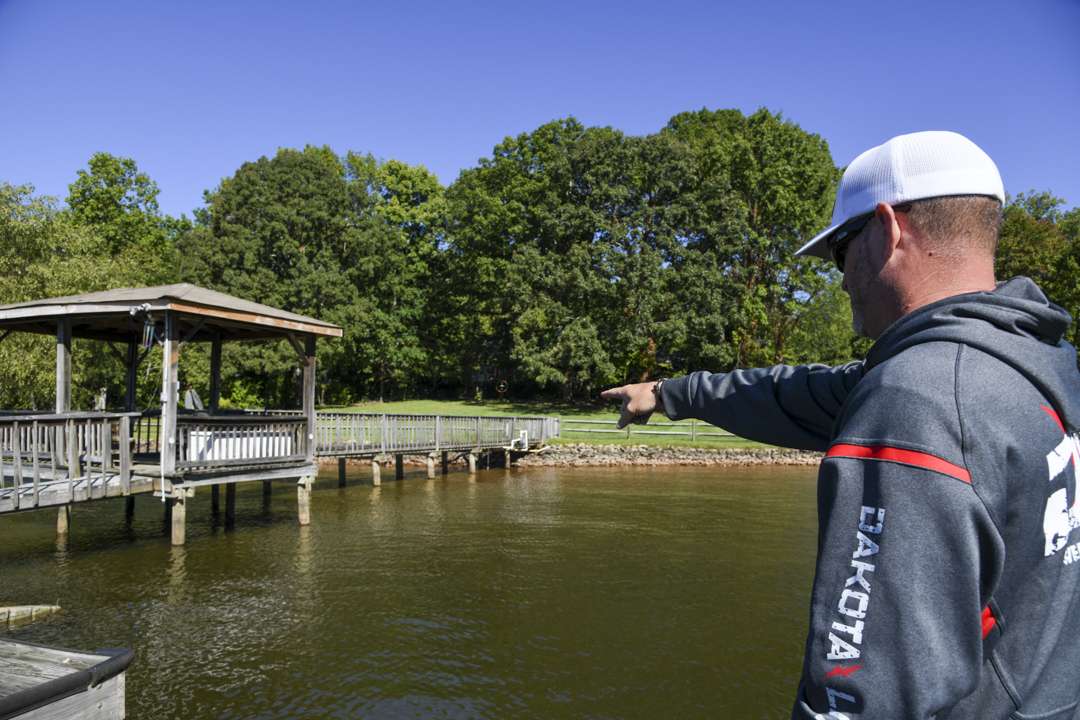
Yesterday, Cherry shared that docks are a great Lake Norman option for tournament-winning bags. But he also said not just any stretch of docks will do.
In fact, he was extremely specific about where he would head if he were fishing this event.
“I would never be more than 5 feet deep,” Cherry said.
And the docks on which he would focus would usually be in half that much water.
“You want to go to the docks farthest back in the creeks as you can get,” he said. “I’m talking about the ones that are almost on the bottom, where you trolling motor is pretty much in the mud.”
He took me back to an example area, and the floating docks were often touching bottom closest to the bank, but the key is how landowners have prepped their boat docks.
“It’s shallow in here, but they dredge those docks out,” Cherry explained.
Sure enough, each dock had deeper water that fell from the shallows into a depression he said was deep enough to hold bass.
Cherry said he wouldn’t spend much time on any one dock, focusing solely on the small shadows cast by the pontoons and small platforms.
“I would make two casts to that dock, two casts to that dock, maybe three casts to that one because you probably need to get under that boat pontoon,” he said. “But you don’t have to make repeated casts to it. When you cast in there, you’ll pick up your rod and your line will swim off or there isn’t a fish there.”
And the bass that pick up his jig are usually largemouth — and can be the 5- to 7-pounders that make for larger sacks of fish.
This makes the approach extremely efficient, allowing a lot of docks to be covered in a day as an angler hops from one shallow dock-filled cove to the next.
“Why would I want to fish a dock that I have to make eight or 10 casts to when I can fish one that I only have to make one or two casts to?” Cherry asked.

